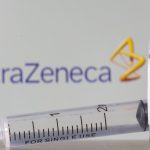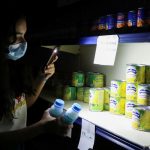Illegal drug manufacturing is on the rise in Europe, according to the European Monitoring Centre for Drugs and Drug Addiction (EMCDDA) .
The EU agency also raised concerns about the growing global scale of the drug market.
The EMCDDA’s annual report stated that “synthetic drug production continues to increase in Europe” – with laboratories pumping out drugs like amphetamines, methamphetamines and other man-made narcotics.
New drugs were said to be appearing at a rate of about one per week, with 52 novel substances identified in 2021.
Variants of synthetic opioids and cannabinoids were among those popping up.
More than 350 drug production facilities were discovered and destroyed in 2020 alone, with most being found in Belgium and the Netherlands.
The increasing globalisation of the drug trade can be observed by the growing links between European crime syndicates and their Mexican counterparts, according to the report.
Jailed British drugs smuggler used luxury yacht for international £160m cocaine plot
‘Middle-class coke heads’ who take class A drugs at football matches could face five-year ban
Is the net finally closing in on Ireland’s alleged billion-dollar drug cartel?
Drugs and their chemical components need to be imported into Europe for production and distribution, and these closer ties between cartels allow for lower costs.
What is causing the world stage to change?
One of the issues highlighted in the report is the effect the Russian invasion of Ukraine will have on the European drug trade.
It states new smuggling routes could sprout from the conflict due to groups “seeking to avoid areas with a heightened security presence”.
It goes on to state that people witnessing “severe psychological stress” could make them more vulnerable to “substance misuse” if the correct support is not in place.
Another area of concern on a global scale was Afghanistan, which grows substantial amounts of opium poppies and also ephedra, which is used to make methamphetamine.
The report notes that, since the withdrawal of NATO forces last year, “Afghanistan’s economic and humanitarian crisis has deepened”.
While the implications of this cannot be quantified, the publication states that “historically, poverty and insecurity has fuelled the cultivation, production and trafficking of illicit drugs”.
Changes in Europe
The report comes on the back of Germany’s government greenlighting plans to legalise the sale of cannabis for recreational use.
Hundreds of medical, legal and other experts will be consulted on the plans.
As well as “traditional” drugs, the EMCDDA also noted the growth in production of novel narcotics like cathinone.
Similar to amphetamines, cathinone is thought to be the main ingredient in khat, a plant used in parts of the world for its stimulant effects.
While this substance tends to be imported from India, at least 52 production facilities have been identified in Europe since 2015.






















